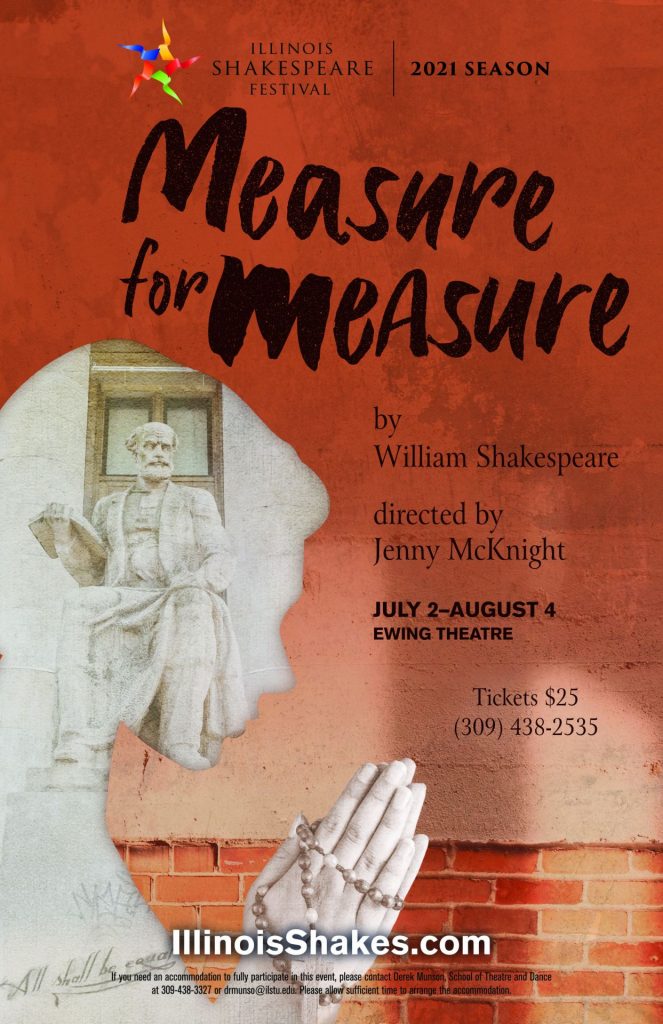You may have heard the term “problem play” used in conjunction with Measure for Measure and several other Shakespeare plays. What does the term mean and when did it originate? Is it useful to treat Measure for Measure as a play with a problem, or does that hinder our understanding?
The first scholar to use the term “problem play” in a major work of Shakespearean criticism was F. S. Boas. In Shakespeare and His Predecessors (1896), Boas grouped together All’s Well that Ends Well, Measure for Measure, Troilus and Cressida, and Hamlet under this label, although the last play on the list is usually classified as a tragedy. The other three plays have several commonalities. Shakespeare wrote them in the first few years of the seventeenth century as he was transitioning out of the comedies and histories of his early career into the more mature tragedies and romances. Boas was not the only scholar to make note of this new phase in Shakespeare’s writing. For example, Edmund Chambers called these three plays “bitter and cynical pseudo-comedies” in the Encyclopaedia Britannica (11th edition, 1911), while R. A. Foakes called them “dark comedies” in a 1971 study.
What made Measure for Measure and its two siblings “problematic” for Shakespeare scholars was first and foremost the uncertainty of their genre. In the First Folio, Shakespeare’s plays are divided into three categories: comedies, histories, and tragedies. Both All’s Well that Ends Well and Measure for Measure are listed as comedies. Troilus and Cressida is awkwardly squeezed between the histories and tragedies, not quite belonging in either category. But the play is also seen as a satire, which is often associated with comedy. Measure for Measure does follow many of the genre conventions of comedy that Shakespeare used in his earlier work—marriage plots, clown figures, and the jovial exploration of human vices. Yet the play does not provide a comforting resolution, which is perhaps the most essential characteristic of the genre. Boas writes:
“…throughout these plays we move along dim untrodden paths, and at the close our feeling is neither of simple joy nor pain; we are excited, fascinated, perplexed, for the issues raised preclude a completely satisfactory outcome…”
Indeed, Measure for Measure is better known for its grim scenes of psychological suffering, especially for female characters such as Isabella, Juliet, and Mariana. If so, then should we treat the play as a tragedy? No, because it does not end in catastrophe. In fact, the play ends with the prospect of four married couples, which ties it with Love Labour’s Lost and As You Like It for the most weddings in a play. Shakespeare gives us the outer shell of a happy ending, which can end up feeling hollow or unsatisfying. Boas goes on to note: “Dramas so singular in theme and temper cannot be strictly called comedies or tragedies.” In other words, the problem for him, and many other critics, is that Measure for Measure does not fit neatly into any of the existing filing cabinets.

But Measure for Measure‘s “problem” is not purely literary. When Boas introduced the term, he was likely influenced by the most talked-about playwright at the end of the nineteenth century: Henrik Ibsen. Ibsen’s social realist dramas took a scalpel to pressing issues of the time, including women’s rights, crowd psychology, and the social implications of medical science. Ibsen’s mid-career works were called problem plays because they explicitly dealt with social issues of the time. Although it would be anachronistic to apply this social realist framework to Shakespeare, who was writing before the modern disciplines of sociology and psychology were formed, critics believed that the Bard had a keen critical eye for the problems of his time. Following in Boas’s footsteps, W. W. Lawrence wrote in Shakespeare’s Problem Comedies (1931) that Shakespeare’s mid-career dramas represent “the serious and realistic treatment of a distressing complication in human life, but without a tragic outcome.” Far from being simple entertainment, a play like Measure for Measure can shed light on the instability of political authority, marriage customs, moral institutions, and the legal system.
In this sense, the play itself is not the problem. Rather, problem plays are about calling attention to a problem in society. But if this is how we define the term, are not most of Shakespeare’s plays problem plays? The wealth of modern scholarship on Shakespeare has allowed us to identify, for example, problems of racial prejudice in The Merchant of Venice and Othello, or colonial power in The Tempest. Rather than single out plays such as Measure for Measure as being outliers, we can use the term as a window into appreciating the ways in which Shakespeare used the theatre to reflect on the complexities of human life and society. In the end, the cause of the problem may be the assumption that his plays are merely stories to be enjoyed with no relevance to our modern society. So do not let this negative-sounding term deter you from engaging with the social themes in Measure for Measure. Embrace the problem!


